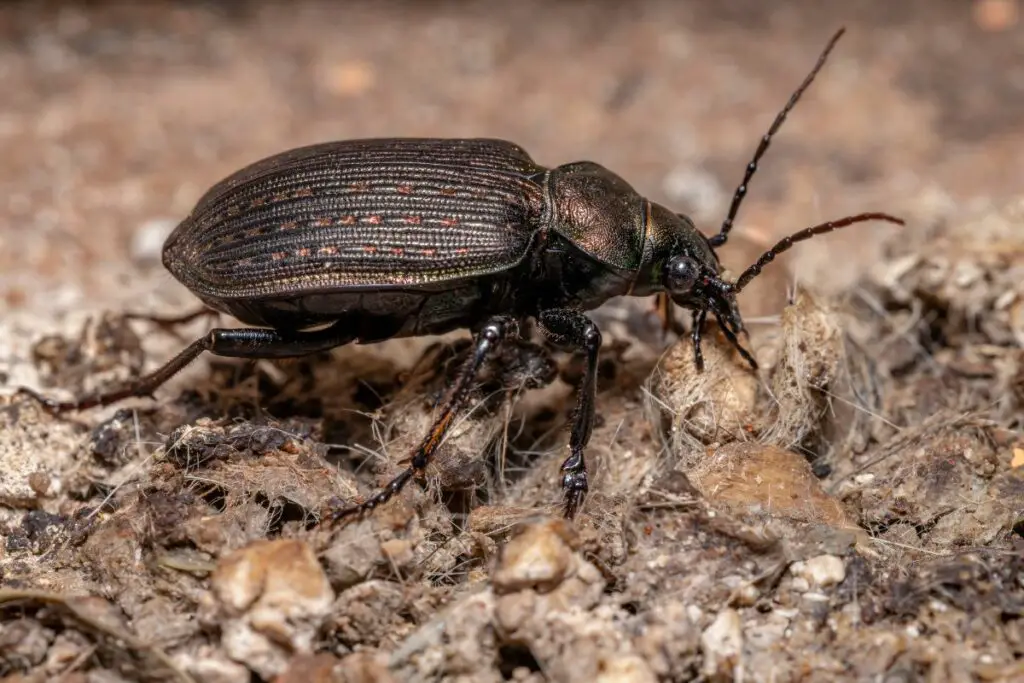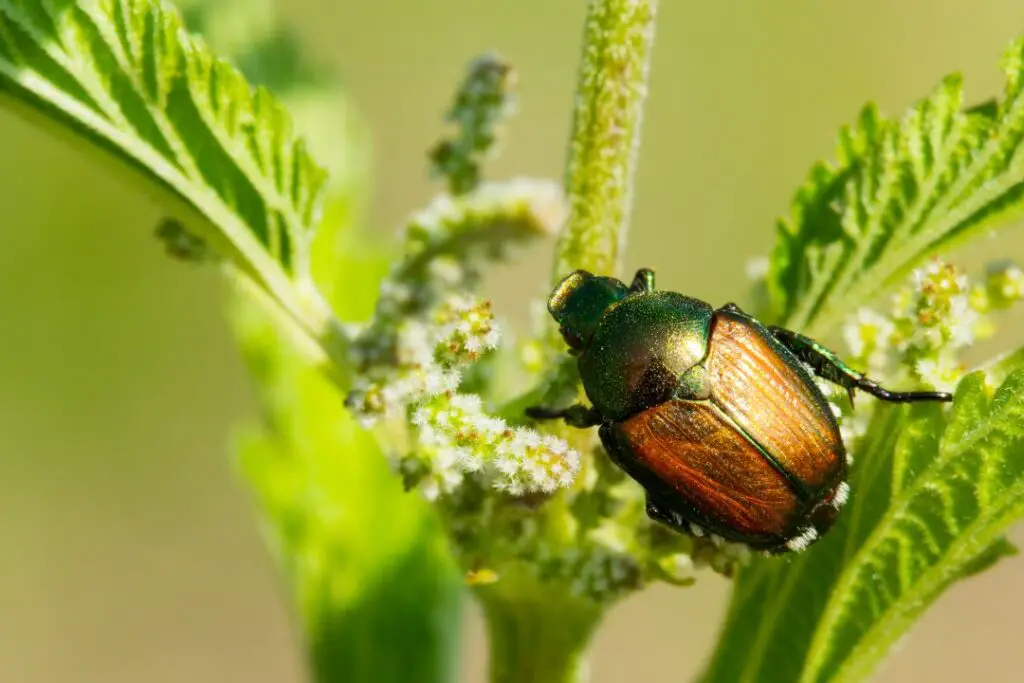Yes, beetles are known for eating plants, wood and even other insects, and once they’ve got all the nutrients they need, it’s pooped out via the anus at the rear of the beetle.
This waste product is called ‘frass’, a cover-all term for any insect poop.
With most focus being on the dung beetle and its strenuous poo efforts, let’s take a quick moment to learn about the beetle’s waste system.
How Do Beetles Poo?
Beetles have powerful mandibles for chewing, and their gut is adapted to process various foods, from plants to animal matter.
Their digestive system includes a foregut for ingestion, a midgut for digestion and nutrient absorption, and a hindgut for waste excretion.
The midgut is where enzymes and microbes break down food and absorb nutrients, tailoring to the beetle’s specific dietary needs.
*Interesting fact – The guts of wood-eating beetles harbour specific microorganisms that help them digest cellulose, turning tough wood into usable energy.
Finally, it’s expelled as small pellets from the anus.
Beetle poop plays a surprising role in ecosystems. It’s rich in nutrients, making it an excellent fertilizer, helping plants grow.
What Does It Look Like?
Beetle excrement, or frass, varies based on diet.
- Herbivorous beetles produce fibrous frass, often green or brown, reflecting their plant-based diet.
- Carnivorous beetles, consuming other insects or flesh, yield a more protein-rich, darker excrement.
- Omnivorous beetles with a varied diet produce frass with a mix of these characteristics, varying in colour and texture depending on their recent meals.
The excrement of leaf-eating beetles is typically tiny, pellet-like, and greenish, reflecting the high cellulose content of their diet.
What Can They Use It For?
Various kinds of beetle larvae deploy a fascinating defence against predators.
A faecal shield is a build of primary frass but sometimes the exoskeleton of beetle larvae.
They use their particularly flexible naus to expel waste and a glue-like substance to build an organic shield above their bodies.
The shield’s defences are twofold. It acts as a chemical deterrent and, secondly, as a physical barrier to attack.
But these shields don’t come without their drawbacks.
Some larvies carry around half their weight in faeces, making for slow-moving speeds and more exposure to animals that eat beetles.
Effects On The Environment
Beetle poo contributes to maintaining soil health and promoting nutrient cycling.
By breaking down and excreting organic matter, beetles help decompose plant and animal material, enriching the soil with nutrients.
This process supports plant growth and sustains the overall health of ecosystems.
Dung beetles, in particular, are outstanding at helping their environment.
They consume and bury faeces and introduce organic matter deep into the soil, enhancing soil structure and fertility.
This activity benefits hundreds if not thousands of other organisms, from worms in the soil to plants and other insects.


